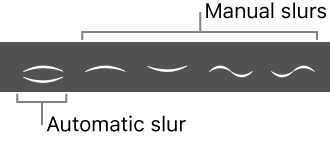Logic Pro X keyboard command of the day. #LogicProX @StudioIntern1
Force Accidental (only flats & sharps)
Inserts an accidental for the selected note(s) if one is needed for the given key signature. Normally the reader is expected to know that a note is sharp, flat, whichever, but sometimes the visual reminder is useful.
When I used to practice for orchestral concerts I would often pencil in the appropriate accidental simply to remind me.
The “only flats & sharps” does just that, only inserts flats and sharps. The “Force Accidental” command will also place natural signs on the notes.
In “proper” musical notation the addition of an accidental changes the note — adding a sharp or flat. It is rare to see this kind of notation in classical literature, but it does occur in Twentieth Century (and beyond) scores. I always questioned stray accidentals…un-trusting soul that I am.
Change the display and position of accidentals — Logic Pro X
By default, the display of accidentals depends on the chosen key signature. Using note attributes, you can change flats to sharps, and vice versa. For information about setting the key signature, see Add key and time signature changes.
⇧ SHIFT – ⌃ CONTROL – ⌥ OPTION – ⌘ COMMAND
